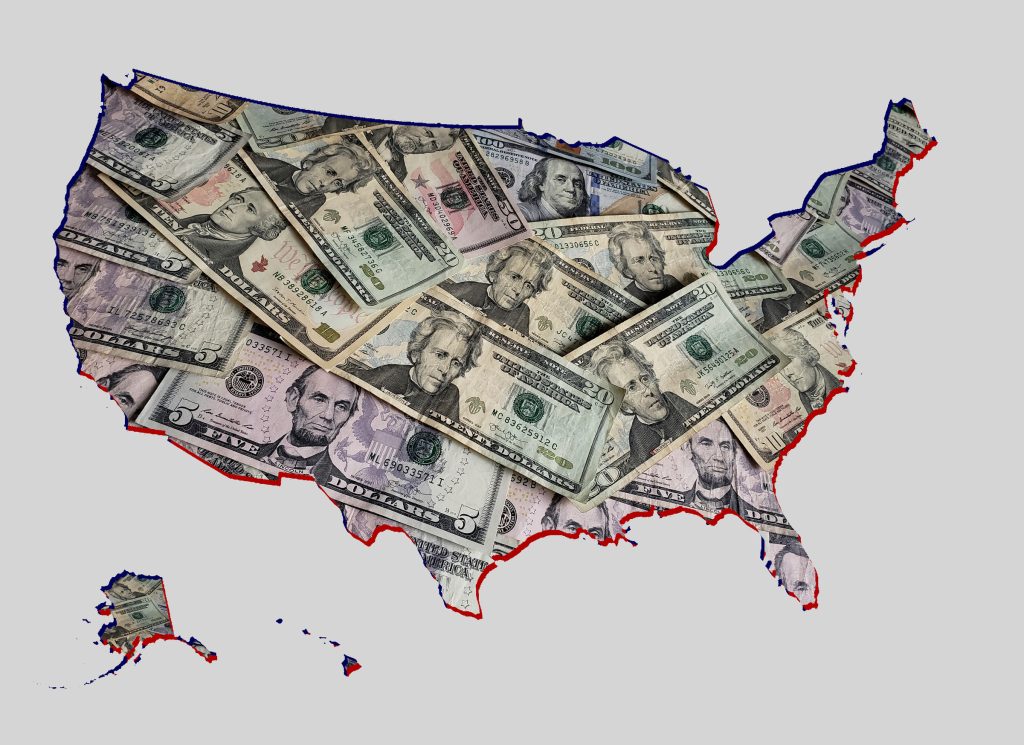
For families across the U.S., the rising price of childcare is more than an inconvenience—it’s a crisis. In some states, childcare costs have officially surpassed rent, making it harder for parents to balance their budgets, plan for the future, or even stay in the workforce. With infant care rivaling mortgage payments and daycare fees draining entire paychecks, families are being forced to make difficult choices about their careers, finances, and living situations. If you’re wondering whether your state is one of the hardest hit, these numbers will give you a clearer picture—and possibly a serious case of sticker shock.
1. Massachusetts
Massachusetts consistently ranks among the most expensive states for both housing and childcare costs, but in recent years, childcare has taken the lead. The average annual cost for infant care exceeds $26,000, while the median rent for a two-bedroom apartment falls just below that. Dual-income households often find that one paycheck goes entirely toward daycare expenses. For single parents, affording childcare without assistance is nearly impossible. Despite statewide efforts to expand early childhood funding, the gap continues to grow.
2. California
In California, the average monthly cost of full-time infant care can top $1,800, while many families in the most affordable suburban and rural areas pay far less in rent. The state’s high cost of living is no secret, but the added burden of childcare costs pushes many parents to rely on grandparents, unlicensed caregivers, or reduce work hours. Urban centers like San Francisco and Los Angeles are especially impacted, with care centers charging premium rates and long waitlists. The struggle between affording childcare or housing isn’t hypothetical—it’s happening daily for thousands of families.
3. New York
In many parts of New York, particularly upstate or in suburban areas, rent is significantly lower than what families pay for childcare. Infant care averages over $1,400 a month, while rents in cities like Albany or Rochester can be hundreds of dollars less. Even in New York City, where both rent and care costs are sky-high, some families report spending more on daycare than on their mortgage or rent. The financial stress has pushed many parents to delay returning to work or seek under-the-table childcare arrangements. Despite being a hub for policy innovation, the affordability crisis remains unchecked.
4. Oregon
Oregon is another state where families are feeling the pinch, with childcare costs outpacing rent in many regions. Infant care can cost upwards of $19,000 per year, while the average rent for a two-bedroom apartment is slightly lower. The shortage of licensed providers adds another layer of stress, forcing parents to settle for costlier or less convenient options. In rural communities, families may have to drive over an hour for care that still drains their budget. Oregon parents are pushing for more accessible subsidies, but the demand still outweighs the supply.
5. Washington
In Washington, especially in areas like Seattle, the cost of childcare far outpaces what many families spend on rent. Infant care routinely exceeds $1,700 per month, while average rental prices in more affordable regions remain below that threshold. This imbalance has made it difficult for middle-income families to thrive, despite earning more than minimum wage. Many working parents find themselves ineligible for subsidies but unable to cover expenses without going into debt. It’s a classic example of being financially stable on paper, but drowning in reality.
6. Vermont
Despite its reputation for progressive policies, Vermont’s childcare costs are surprisingly steep. Families with infants pay over $18,000 annually for care, more than what the average household spends on housing. The state has made efforts to subsidize early education, but many families still fall through the cracks. The lack of available providers adds competition and drives prices even higher. In Vermont, quality care exists—but only if you can afford it.
7. Colorado
Colorado families are facing a widening affordability gap as rent stabilizes but childcare costs continue to rise. The average cost for infant care in the state is just under $1,850 per month, exceeding rent in many suburban and mountain towns. Areas like Boulder and Denver are particularly difficult, where long waitlists and staffing shortages drive prices even higher. Parents often face the impossible choice between career advancement and staying home to care for children. The state has introduced pilot programs, but most families are still feeling the squeeze.
8. Minnesota
Minnesota has one of the highest childcare costs in the Midwest, with families often paying more than $22,000 per year for infant care. Compared to average rent across the state, which is notably lower in rural and suburban areas, childcare takes the financial lead. Many parents describe feeling punished for working, as most of their income vanishes into daycare fees. While state assistance programs exist, they don’t cover middle-income families who still struggle to make ends meet. It’s a growing problem with no simple fix.
9. Connecticut
In Connecticut, childcare costs regularly exceed rent, especially in more affordable parts of the state. Parents pay around $1,650 per month for full-time infant care, with average rent in some areas being notably below that figure. The high cost of living, combined with stagnant wages and limited childcare options, has left many families in a bind. Even well-off households feel the burden when adding multiple children into the mix. For many, it’s not a question of whether to cut costs—it’s where.
10. Hawaii
Living in paradise comes with a steep price, especially for families with young children. In Hawaii, average infant childcare costs are nearly $1,800 per month, which rivals or exceeds rent in many local communities. With a limited number of licensed providers and high living expenses overall, families often rely on informal care networks or reduce working hours. Some even move off-island due to affordability concerns. In Hawaii, the cost of care affects not just budgets, but entire life decisions.
When Rent Isn’t the Biggest Bill
If you thought rent was your largest monthly expense, childcare may have already passed it—quietly and consistently. The rising cost of care doesn’t just affect families’ wallets. It shapes how they work, live, and grow. These ten states are just the start of a national pattern that demands more attention, better policy, and real support for working parents. Until that happens, families will keep facing impossible trade-offs.
Do childcare costs exceed your rent? How are you navigating the financial pressure? Share your experience in the comments—we want to hear from you.
Read More:
Parents Are Burning Out Trying to Afford ‘Good’ Childcare
Why Some Parents Are Giving Up Childcare Altogether
The post Top 10 States Where Childcare Costs Now Exceed Rent appeared first on Kids Ain't Cheap.







